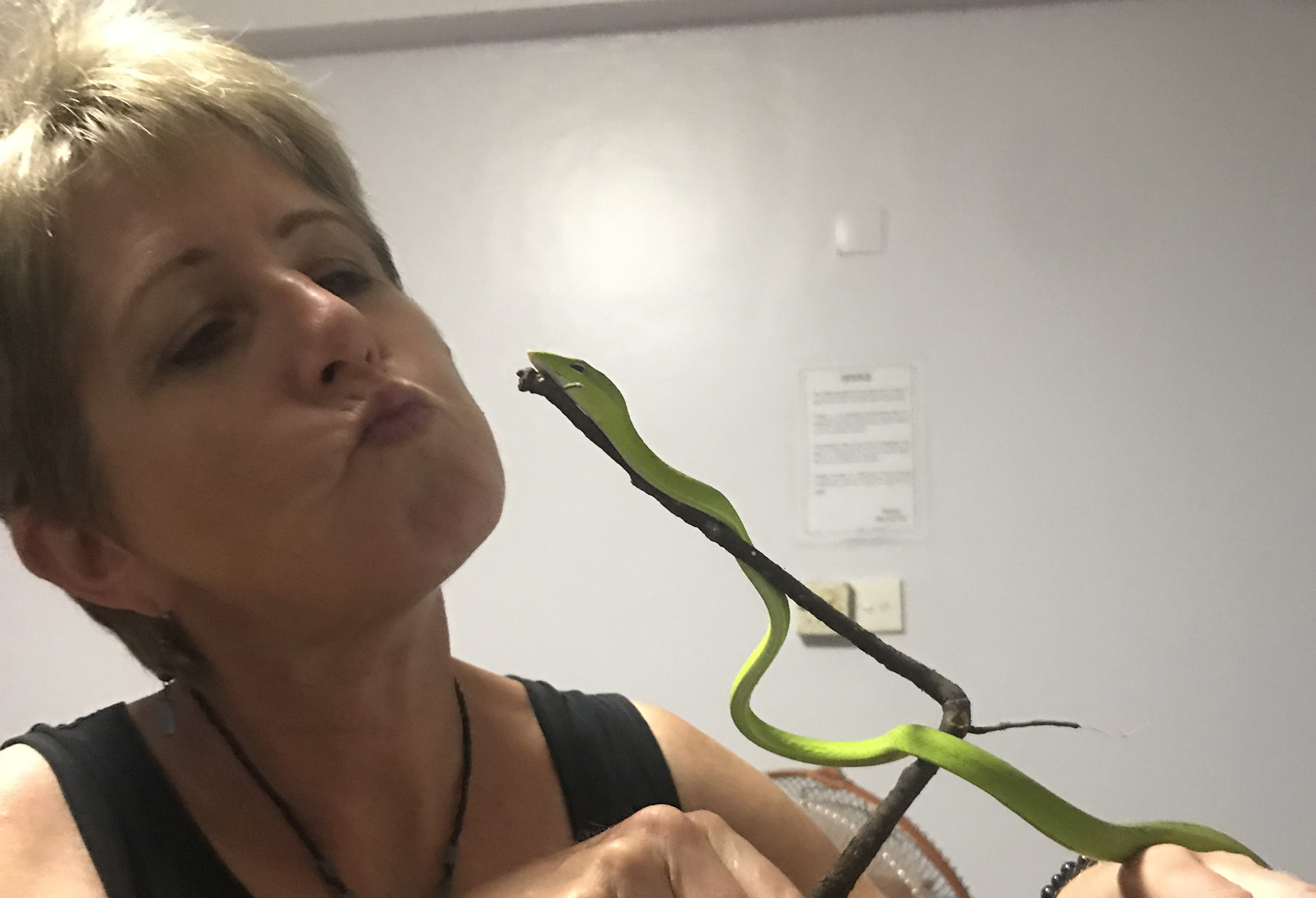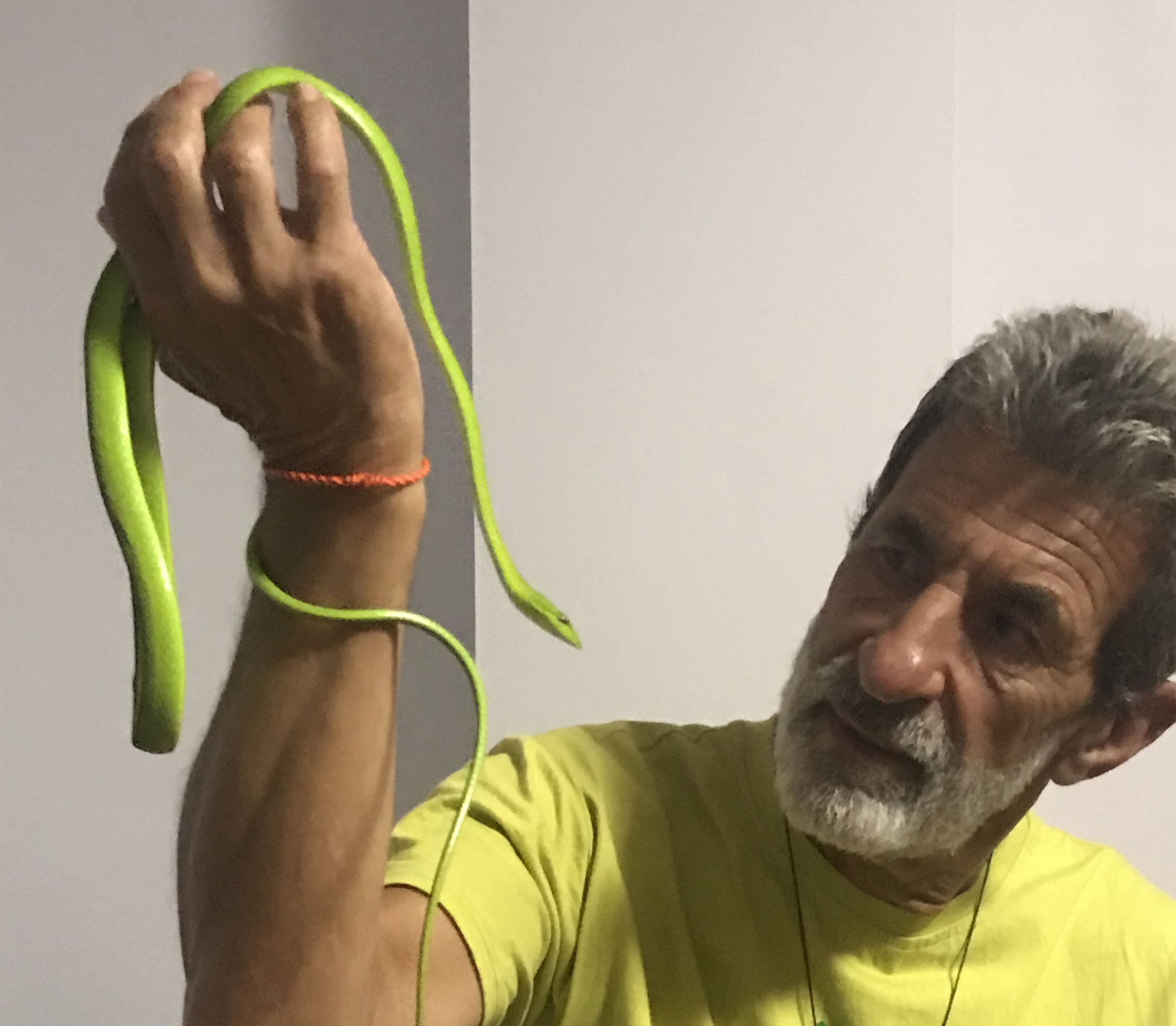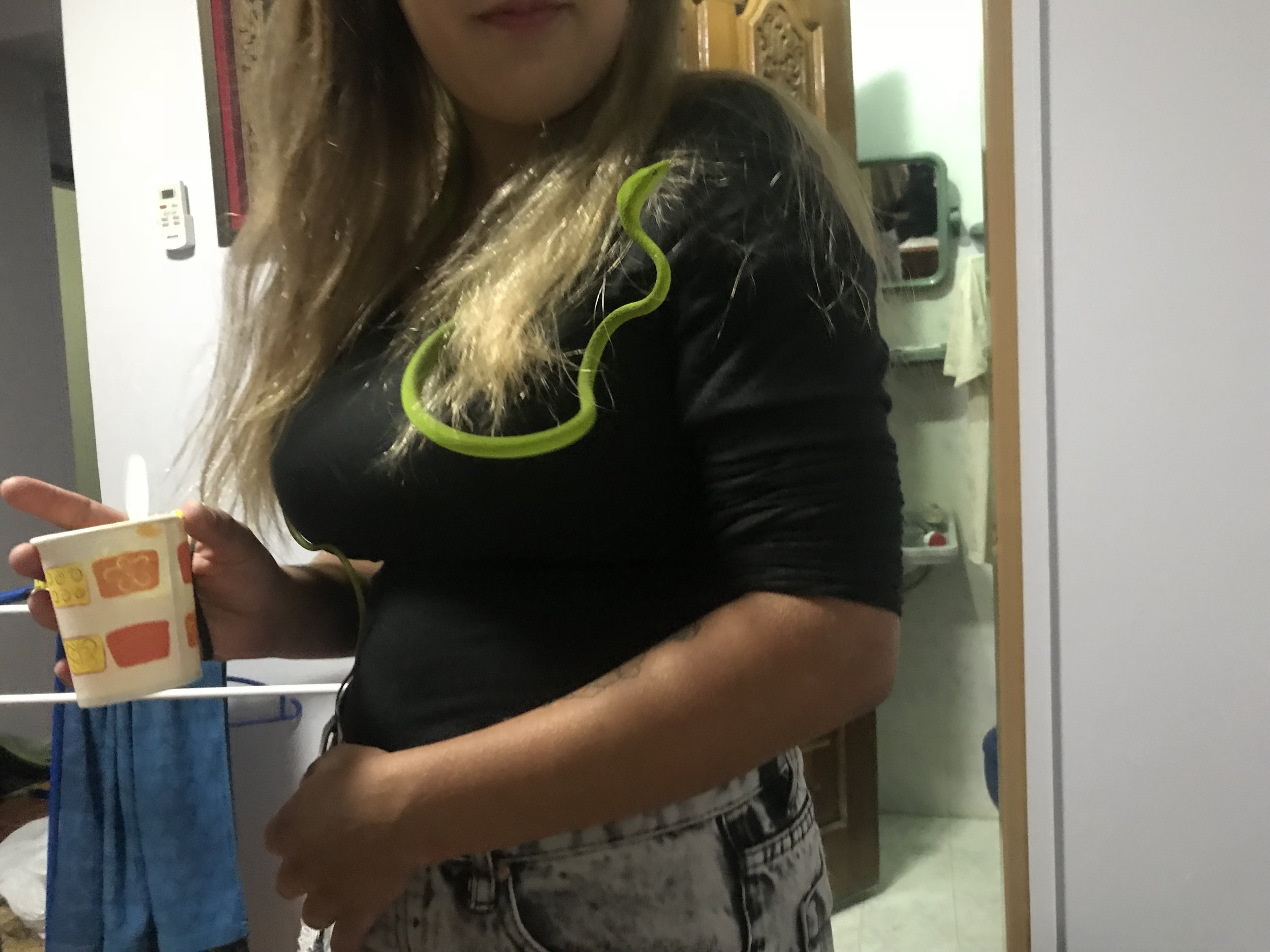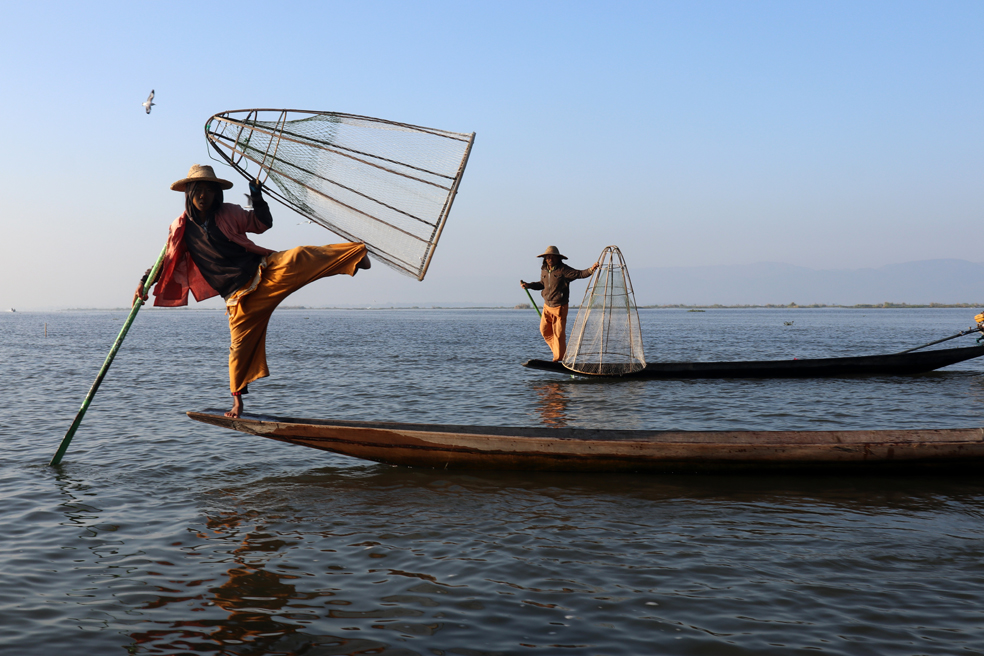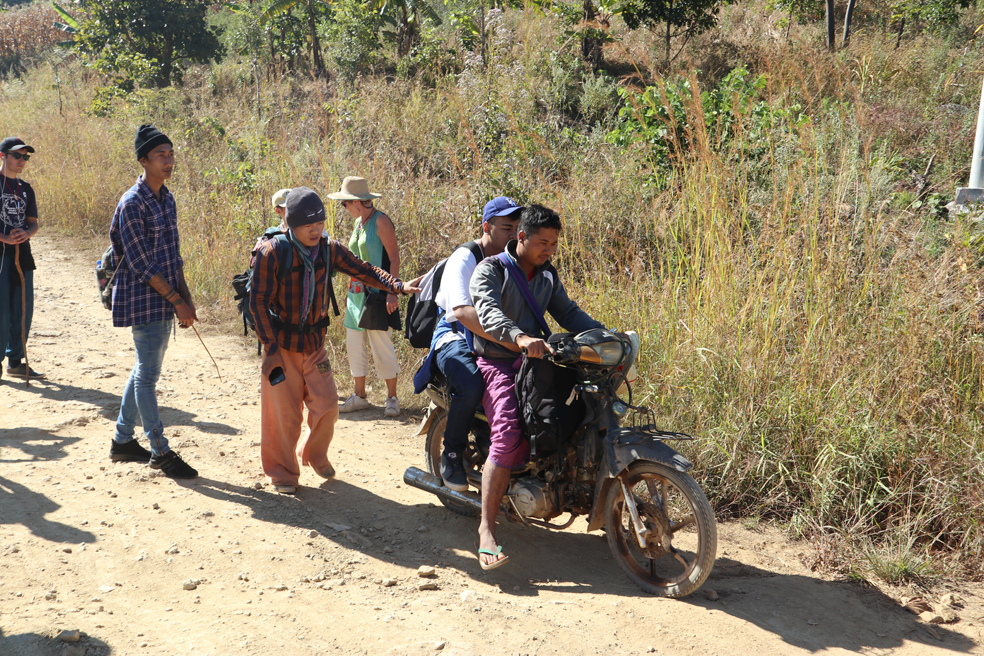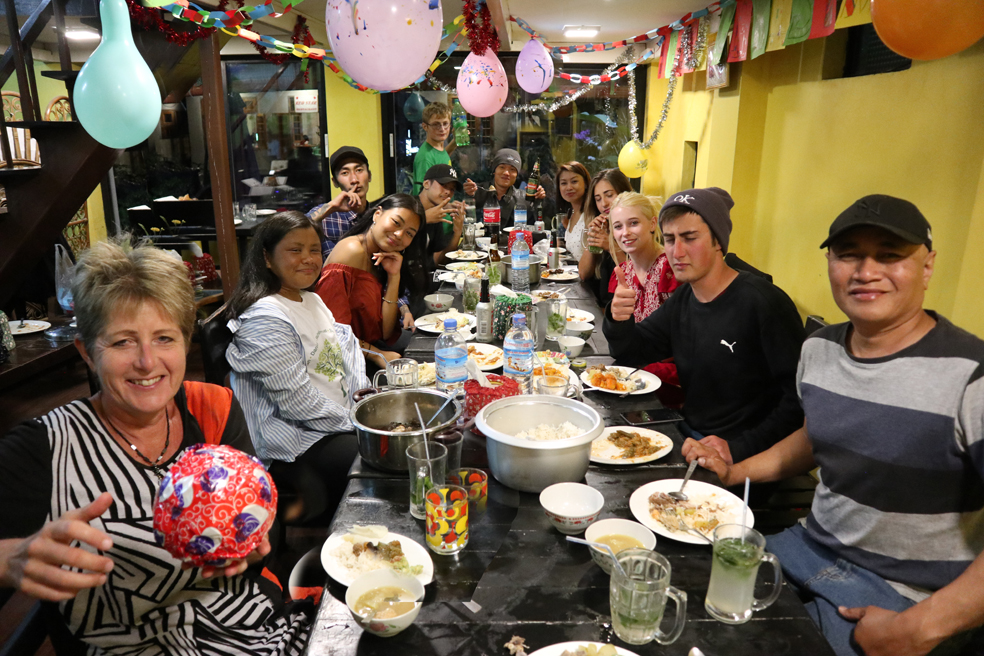(I've put pics of our New Year snake on Facebook, but not written anything in a blog. So given my wish to remember the best bits of our trip when I am even older - and the possibility that if I don't write about it, I'll forget, here's a blog for posterity.)
On New Year's Eve, Geoff and I were out at the market in Yangon when out of the blue a photo and video of a thin green snake wrapped around a hotel towel rail appeared on my phone, with this message from Emma: “We found a new team mascot.”
Closer inquiry revealed Emma hadn't come home to find a snake in her room, but had bought it from a man who was carrying it around in a small jar, looking for a buyer. It wasn't clear if the potential purchaser was likely to be preparing her/him for the cooking pot, for a personal zoo, or a Buddhist “releasing wild animals” mission. Some sinister satanic ritual perhaps? We will never know.
Anyway, the man had two snakes, but Emma only had enough money ($8) for one, so bought the larger (and therefore more cramped in the jar) one. She said the man was “very adamant” it wasn't poisonous, although a quick "I-wonder-if-my-daughter-is-about-to-die" internet search in the middle of the street revealed it was probably an Ahaetulla, or vine snake, considered to be “mildly venomous”. Wikipedia revealed some additional, not-very-reassuring information that: “the genus name Ahaetulla comes from the Sinhalese name 'ehetulla' for Ahaetulla nasuta, which means 'eye plucker' or 'eye striker'”. This was because the vine snake was believed to go for the eyes of attackers, blinding them. Great.
Waiting for his chance to get those eyes...
What did the hotel guys think? I asked Emma via WhatsApp. “We didn't tell them," she said. "I doubt they would be very impressed.” Another layer of complexity.
Actually Emma's snake, named 'Slithery Boy' by some and 'Oswald' by others, was glorious. He/she/it appeared friendly, happily posing as broach,
charming bracelet,
or towel rail accessory.
Normally an amazing green colour, it sometimes expanded its body in a menacing fashion and black and white markings appeared from under its scales. It felt cool and smooth – rather like I would expect a snakeskin handbag to feel, funnily enough. And it drank water by flicking its green forked tongue tongue in a cute fashion.
Slithery Boy seemed content living in Emma's room. And although we worried about the lack of lizards and frogs in its environs, we reckoned it could probably survive a couple of days between meals.
Lots of lovely jungle off there in the haze
The afternoon of January 1 was earmarked for our departure for the Mount Kyaiktiyo pagoda (a huge gold-plated Buddhist rock perched on the top of a holy mountain), and the deep green jungle which we hoped was to be Slithery Boy's new home. The first problem was that check-out at the hotel was 12, but our minibus ride wasn't coming until after 2. We could hardly sit around reception with a snake the staff didn't know anything about, and we were reluctant to put him back in his jar, even for a couple of hours. So everyone except Emma (seven of us at that stage) went and sat in reception and hoped no one would notice she hadn't checked out. If they did, they were too polite to mention it.
When the bus arrived, we put the snake in a cardboard box (a box that had once contained spicy Christmas cookies and had come to Myanmar from Germany, via Japan) and smuggled him into the already crowded minivan, where he only occasionally tried to escape and cause havoc.
The final photo: Snake in a box.
It's surprisingly difficult to find the perfect patch of jungle, even in Myanmar. For a few hours we were on the highway, then when we turned off we were mostly going through villages, and we didn't want him captured again and maybe eaten. A passing army camp seemed to provide lots of trees, but we weren't keen to be questioned by the dreaded Tatmadaw about what we were doing lurking about the perimeter fence with a snake. Patches of jungle always seemed to occur in places we couldn't stop the bus and then there was quite a time when we were going through rubber plantations, and we didn't know whether Asian vine snakes liked rubber trees. And then it got dark and we couldn't tell what was jungle and what wasn't. And then we arrived at our destination, which was a town and therefore unsuitable, but we didn't want to keep him another night without food. So we drove outside a way and released him into a large thicket where there seemed to be a variety of trees. He slithered upwards into some branches and disappeared, without a backwards glance.
It was an emotional moment.
Go well snake. We'll miss you. Life and soul of our 2017/18 New Year Party.

